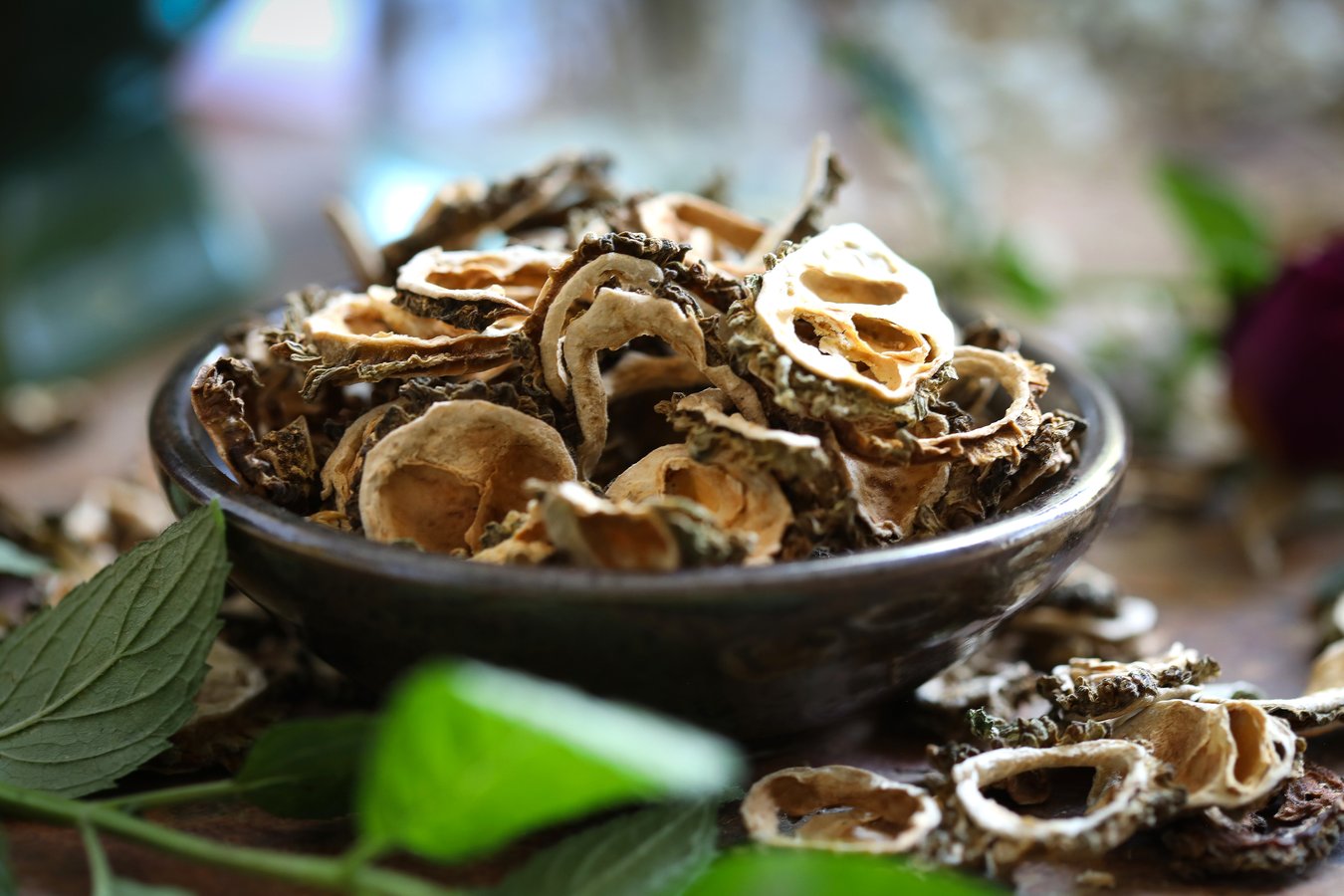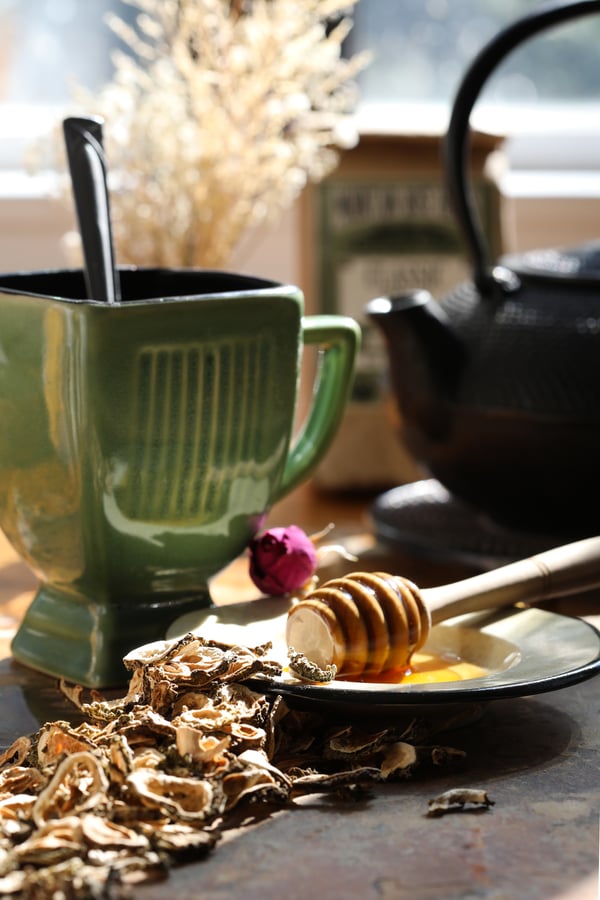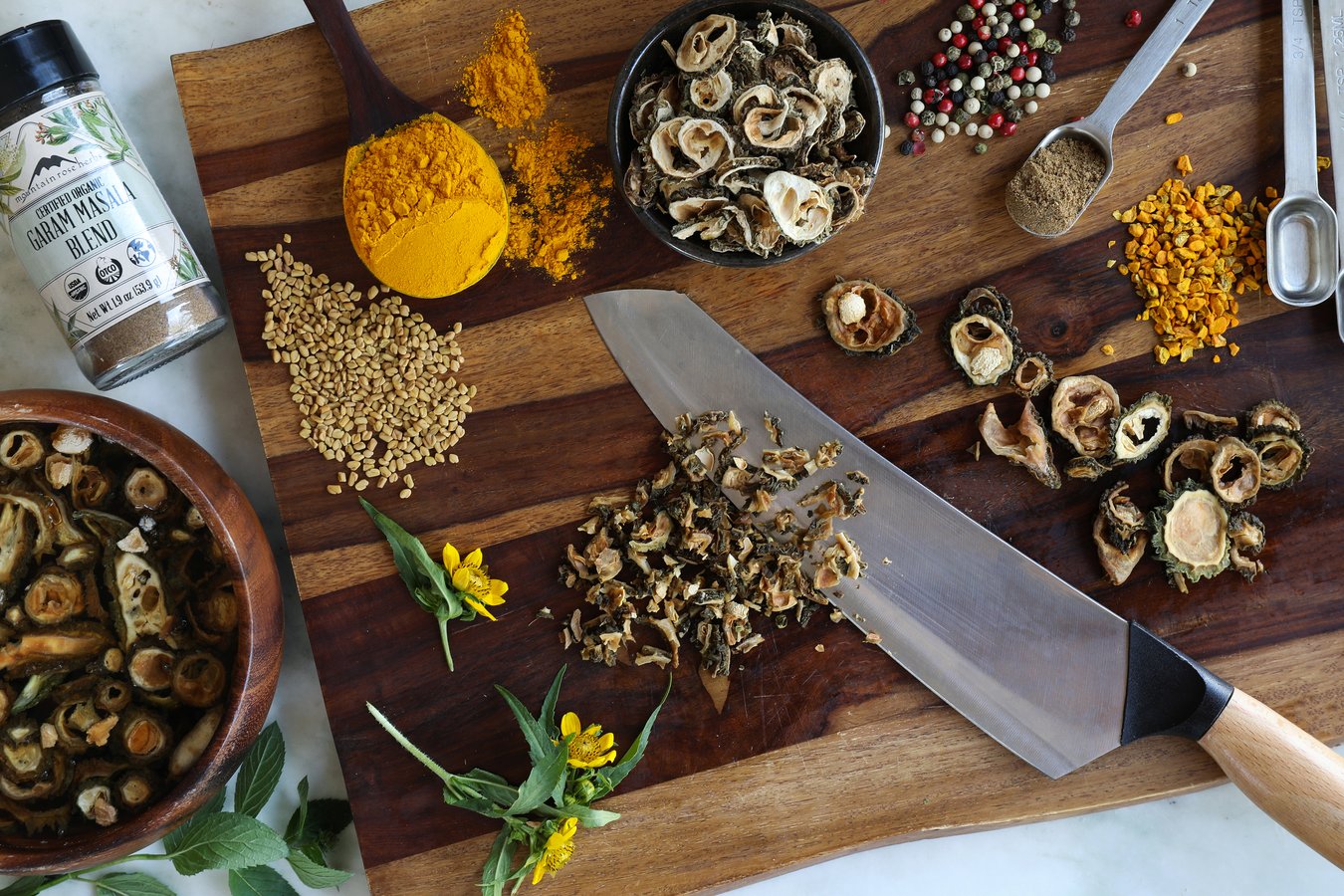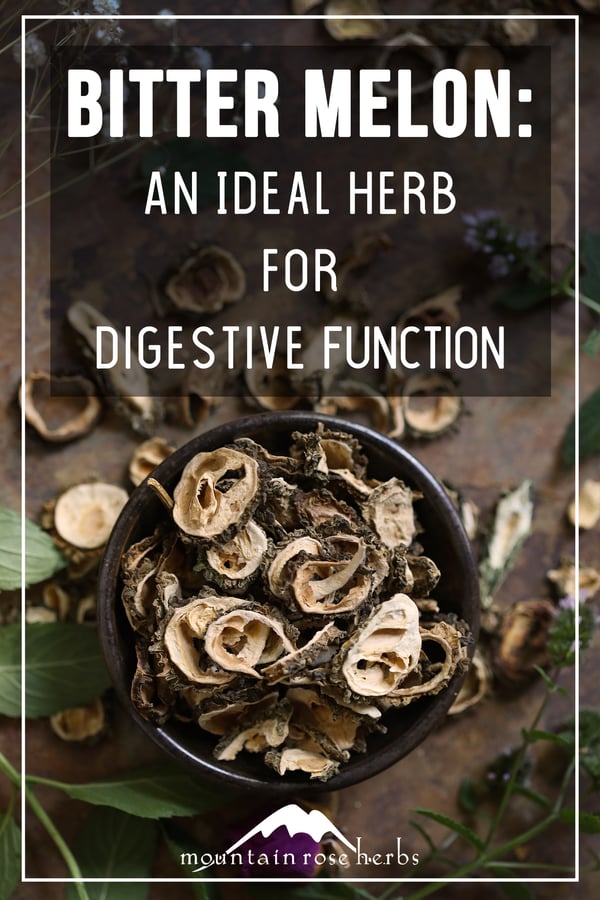Bitter melon (Momordica charantia), also known as bitter gourd, has a long history of use in the herbal tradition of Ayurveda. As its common name suggests, this member of the Cucurbitaceae (cucumber family) is very bitter, unlike its many relatives that so commonly grace our dinner table! Even with its strong bitter flavor, bitter melon is utilized in cuisine and herbalism from many areas of the globe, including East Asia, India, South America, and the Caribbean, and it is one of those special plants that straddles the line between herb and food.
The taste of Momordica charantia gives us several clues about its use in herbalism. Like so many other bitter plants, bitter melon is used as a digestive and appetite stimulant and to support balanced blood sugar and lipids. But there’s more to this gourd than its bitterness! It may be difficult to detect any taste beyond the bitter flavor, but the gourd also has a pungency to it. This pungency works hand-in-hand with the bitter quality to stimulate digestion, a quality known in Ayurveda as deepana (stoking agni, the digestive fire).
Because Ayurveda considers bitter plants to be cooling in nature, and pungent plants to be heating, bitter melon is recognized as a somewhat energetically balanced herb that may be appropriate for all doshas (vata, pitta, and kapha) if given in the appropriate dose and circumstance. The bitter and pungent tastes have a uniting quality as well: they are lightening in that they are thought to clear expressions of heaviness in the body, such as digestive congestion and the buildup of material in the ambu vaha srotas and mutra vaha srotas (the water-regulating and urinary channels), as well as excess water or earth elements in general: all conditions for which bitter melon was used traditionally and continues to be used in modern Western and Ayurvedic herbalism. This lightening quality is also behind the Ayurvedic actions ama pachana (clearing metabolic waste (ama) from the digestive tract) and virechana (laxative). Today, bitter melon is most famous for its support of healthy blood sugar balance.*
Note that bitter melon should not be used during pregnancy and should only be used under the guidance of an experienced practitioner, particularly if combining with hypoglycemic medications.
If you are growing bitter melon in your garden, the best way to incorporate it into your daily herbal routine is to juice the gourd and drink as-is or with a bit of honey and/or lemon. Without the fresh plant readily available, simply stir the dried gourd powder into hot water or incorporate it into your favorite herbal beverage (if you don’t mind adding a splash of bitter!).
Use bitter melon along with dietary and lifestyle protocols under the guidance of a qualified practitioner to assist with maintaining already healthy blood sugar levels and to stimulate digestion.
Cooking with Bitter Melon
While you can certainly make a bitter melon tea, juice, or decoction for your daily dose of bitter, it can be easier on the palate to blend the intense bitter flavor of Momordica with other spices in a meal. After all, that’s how this gourd has traditionally been used, and what better way to use a tonic herb than to incorporate it into your diet?
If you don’t have access to fresh bitter melon, the dried gourd can be reconstituted similarly to the way many people cook with dried mushrooms. Simply soak the dried gourd pieces in hot water or broth for 15-20 minutes, drain, and chop up or use whole in curries, stir-fries, soups, stews, omelets, or even hummus and other dips! Start out with a small amount to find your tolerance for the bitter flavor. While you do want to taste at least a bit of the bitterness for optimal benefits, you can also disguise it somewhat by combining with coconut, tamarind, fenugreek, and/or turmeric.
Bitter melon and other herb-like foods can play a significant role in both our nutrition and our wellness. If you'd like to continue learning about this and other aspects of herbalism, check out Herbal Academy’s large collection of online herbal programs. This article has focused on bitter melon’s use in Ayurveda. Bitter melon is a popular food and herb everywhere it grows—to learn about its use in the Caribbean, be sure to read the Herbal Academy’s article: 8 Everyday Herbs of The Caribbean by Ayo Ngozi.
*This statement has not been evaluated by the Food and Drug Administration. This product is not intended to diagnose, treat, cure, or prevent any disease. For educational purposes only














